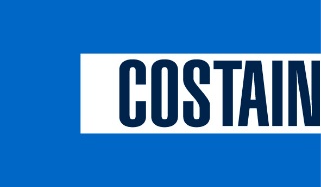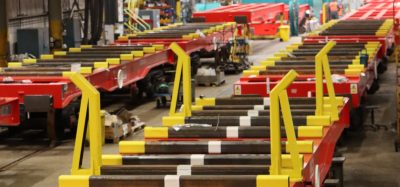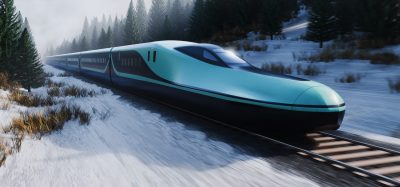A class of their own?
Posted: 8 April 2008 | | No comments yet
Recently, Freightliner Group Ltd placed an order for 30 freight locomotives of a brand new design, giving even greater hauling capacity and a significant improvement in fuel economy than currently seen on the UK network. Project Genesis, which is being developed in partnership with General Electric (GE), will bring new technology to the UK rail freight market, enabling Freightliner to move longer and heavier trains whilst reducing CO2 emissions per tonne moved. The locomotive is currently undergoing development and will be ready for introduction into the UK during 2009.
Recently, Freightliner Group Ltd placed an order for 30 freight locomotives of a brand new design, giving even greater hauling capacity and a significant improvement in fuel economy than currently seen on the UK network. Project Genesis, which is being developed in partnership with General Electric (GE), will bring new technology to the UK rail freight market, enabling Freightliner to move longer and heavier trains whilst reducing CO2 emissions per tonne moved. The locomotive is currently undergoing development and will be ready for introduction into the UK during 2009.
Recently, Freightliner Group Ltd placed an order for 30 freight locomotives of a brand new design, giving even greater hauling capacity and a significant improvement in fuel economy than currently seen on the UK network. Project Genesis, which is being developed in partnership with General Electric (GE), will bring new technology to the UK rail freight market, enabling Freightliner to move longer and heavier trains whilst reducing CO2 emissions per tonne moved. The locomotive is currently undergoing development and will be ready for introduction into the UK during 2009.
With the Government’s release of the White Paper in early 2007, the design of the new locomotive will incorporate the need for greater rail capacity in the UK. The publication supported the industry’s forecast of a 30% growth in rail freight by 2014, and this new locomotive will be able to haul more volume than ever before. In addition, there are increasing pressures to sustain a continued programme of environmental improvement across the rail network, meaning we must continue to look at ways to improve our carbon footprint. With the network capacity tight and the government investing in schemes such as TIF, which will provide a gauge cleared route from Southampton to the Midlands, freight operators need to make the most out of the network. Parts of Freightliner’s investment plans are the development of these new locos to satisfy the changing needs of the UK freight industry, as well as our customers. Customer requirements have changed significantly in the last generation and freight companies must harness these technical advantages. Unlike road fleets, locos are a 30 year investment; the class 66 design basis is nearly 20 years old now and these new locos will supplement Freightliner’s existing Traction & Rolling Stock.
“We are investing in this new development on behalf of our customers and the standards of 21st century society,” explains Mr. Shakerley. “The benefits this development will bring include an important improvement in standard of service reliability as well as greater haulage capacity in line with the increased demand for freight on rail. And as a part of Freightliner’s focus on quality of service, it will proactively help our customers meet their own environmental policy targets.”
This project is in partnership with General Electric (GE), the world’s largest and most experienced manufacturer of locomotives. GE has an innovative product line to meet the performance specification which this project requires to do its job. Freightliner run over 1,800 trains per week in the UK alone, hauling containers, coal, aggregates and many other bulk commodities and products. This proves that they have the practical experience and commercial understanding to ensure the locomotives are designed and built to meet customer business requirements and in accordance with UK and EU technical standards.
“All in all we found GE to be the most competitive supplier,” says Mr. Shakerley. “We see this as a partnership. GE is in the forefront of the proven technology. So together, we have the necessary breadth and depth of expertise to develop this long term asset.”
Although still in conceptual design stage, the main features of the new loco are lower emissions per gross tonne moved to the betterment of both local communities and the wider environment, and increased hauling capacity. In physical statistics, the locomotive will be at the same weight and similar dimensions as current stock in order to access the same wide and diverse route availability as now, and to fit within the UK gauge. However, it will have an immense horsepower of 3700 hp, which is likely to be about a 23% increase, which will give it superior acceleration and to meet the path requirements enjoyed by current freight AC locomotive diagrams.
Technically speaking, the new design will bring many firsts to a UK locomotive. The type and spec of the engine is to be the GE J616 – a 16-cylinder twin-turbo 4 stroke proven from its application as a gas engine in power generation which GE are currently converting. The traction system will be AC/AC, extensively used by GE in their current models throughout the world and shown to underpin performance reliability. This is the first time for any UK freight diesel locomotive but is proven widely in the US to provide greater adhesion properties and therefore far better acceleration from a standing start. Another first for a diesel locomotive in the UK is the dynamic braking system. When reducing speed it uses the traction motors to regenerate energy and put electric current back into the locomotive, using the electric current to drive the auxiliary motors. The auxiliary power unit will ensure battery peak efficiency, maintain coolant temperatures in cold weather and will power air conditioning in the cabs – all adding up to using less fuel and noise when idling. The sophisticated control technology allows the auxiliary motors to be driven independently of engine speed, resulting in improved engine performance and helping reduce emissions.
Mr. Shakerley adds, “These new technologies mean faster acceleration from idle, which will enable the network to create the capacity necessary to get more freight traffic onto rail without compromising trailing weight and therefore goods moved – while reducing risk of delays to passenger services.”
There are numerous other benefits of this new locomotive. Fuel efficiency will be derived not just from the engine performance, but also the way that the auxiliary control systems on the locomotive use the waste energy. A saving of approximately 10% per tonne moved is expected over other modern locomotives. While fuel capacity is of course dependent on axle weight, Freightliner’s objective is to fit as much fuel in as possible.
Mr. Shakerley comments, “Selecting a fuel capacity is a compromise with ensuring we have wide route availability and the additional equipment installed, but we are targeting 6,000 litres capacity.”
Traction and haulage power will not be adversely affected because it is efficiency of use of the available power and the way that the energy is extracted from the fuel which will give rise to the savings. Additionally, the design of the cab is also a consideration in the development of the locomotive. Amongst other things, the cab will have air conditioning and the engine resiliently mounted on rubber to dampen vibrations, which should all lead to a quieter and more comfortable ride. Freightliner will also involve their train drivers with the cab ergonomic design before this is finalised.
Even in this design stage, many potential issues need to be considered; one of which is maintenance. Modern methods and components are being deployed to ensure optimum maintenance programming during the product life of the locomotives. The first production locomotives of Project Genesis will also trial a state-of-the art diagnostic maintenance package that will permit technicians to dial into the locos in traffic to monitor performance. In the event of a problem they will be able to diagnose the fault and send a technician to meet the locomotive with the required parts to fix the locomotive before it fails.
The locomotive will be built in compliance with EU Emissions Directive Stage 3A. Subsequently, as the engine is already well within the 3A requirements, there is a clear technology path and space provision to achieve EU emissions Directive Stage 3B. The locomotive will not come at 3B compliance from first build, due to the development time required to develop the technology. As for meeting future standards being laid down for rail, the team are ensuring the configuration will be in line with the Government’s Rail Technical Strategy White Paper of July 2007. The design of the loco will fully meet, and should exceed, today’s standards.
As the project is not yet even at prototype stage, UK and EU clearance is some way off, but the relevant rail and safety authorities are already being consulted. So far there is widespread support. As the development continues, Freightliner has been involving rail authorities such as the DfT, ORR and Network Rail. Freightliner is the first and currently only company to have ordered these locomotives.
“It reflects the Freightliner pre-eminent reputation for service quality and reliability that allows us to continue to earn our customers’ trust,” explains Mr. Shakerley. “We are supporting GE in defining the scope and development and acting as contracting entity in accordance with the RIR regulations.”
One of the most significant challenges in integrating such advanced technology in a freight locomotive is the UK clearance gauge. This has never been done before, and Freightliner is working with GE to develop this. Freightliner recognise that to get a completely new design of locomotive introduced by June 2009, designed to ensure it is fit for the current and future standards over the next 30 years and beyond, builds on those unique challenges to make project success something very special.
“From the outset it is clear that this can only be achieved with a partnership approach from the stakeholders,” explains Mr. Shakerley. “But we are confident that the interoperability process and the compatibility assessment process laid out by RIR regulations and industry standards will support the tight timescale.”
Project Genesis will produce a locomotive which will be the epitome of 21st century locos on the UK network, bringing revolutionary technology to the rail freight market. The locomotive is innovative and optimises growth in technology, capacity and efficiency. This investment into the development of a new locomotive will improve Freightliner’s carbon footprint and enable them to move more payload per train than ever before; proof that Freightliner are at the forefront of the industry.
“I have been in the rail business for the majority of my working life and Project Genesis is the most exciting new venture for me yet,” explains Mr. Shakerley. “For me it is a project that will set new standards in environmental efficiency, industry teamwork and partnership and commercial value in which the industry can be proud.”
About the author
Tim Shakerley
Tim Shakerley is the Engineering Director and Professional Head of Engineering for Freightliner Group Ltd. He is responsible for the maintenance, repair and technical specification and standards of the Freightliner locomotives and rolling stock, cranes, infrastructure and plant. He is a Chartered Engineer with a degree in Mechanical Engineering. After three years as the Traction and Rolling Stock Engineer for Freightliner, Mr. Shakerley became the Group Head of Engineering in 2003, and Director of Engineering in 2005. Prior to taking up Train Engineering Maintenance Management posts with passenger train operators and rolling stock leasing companies, his career in the Railways began with a University sponsorship by the British Railways Board.
Issue
Related topics
Cargo, Freight & Heavy-Haul, Rolling Stock Orders/Developments






